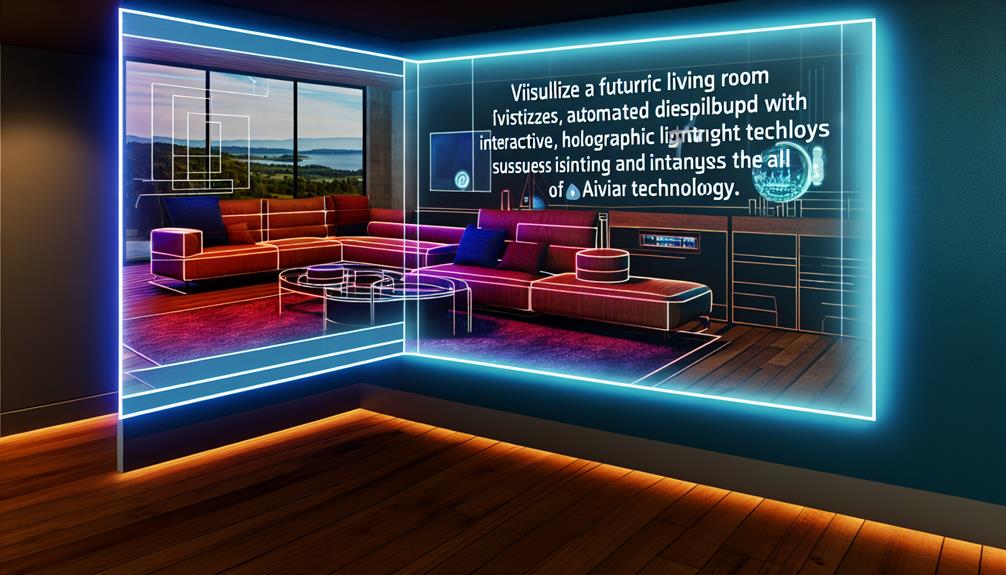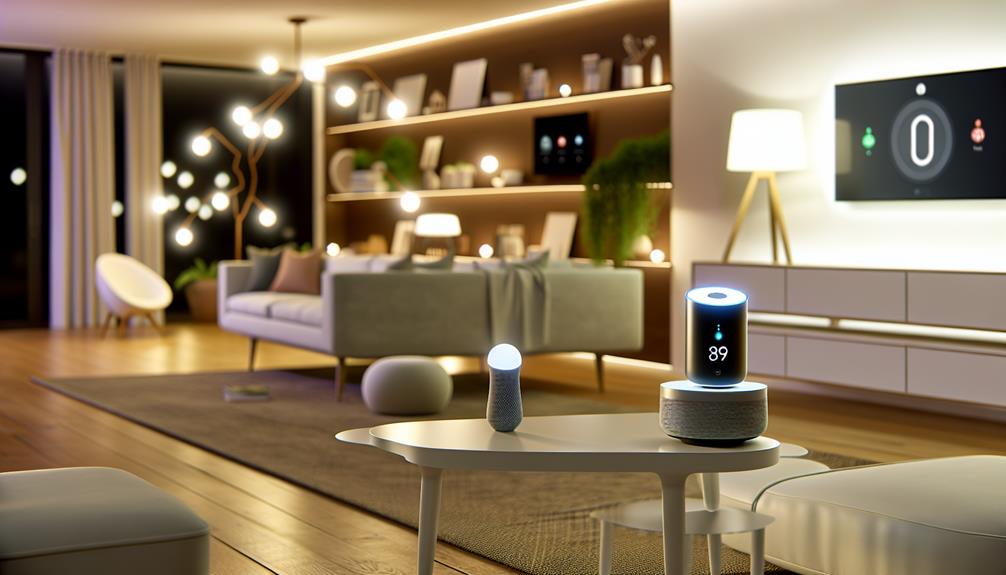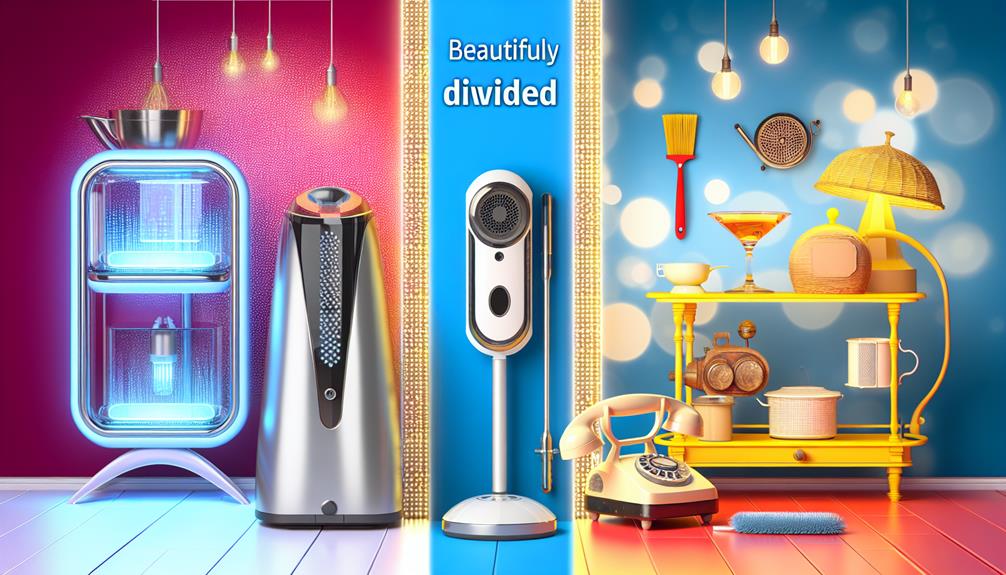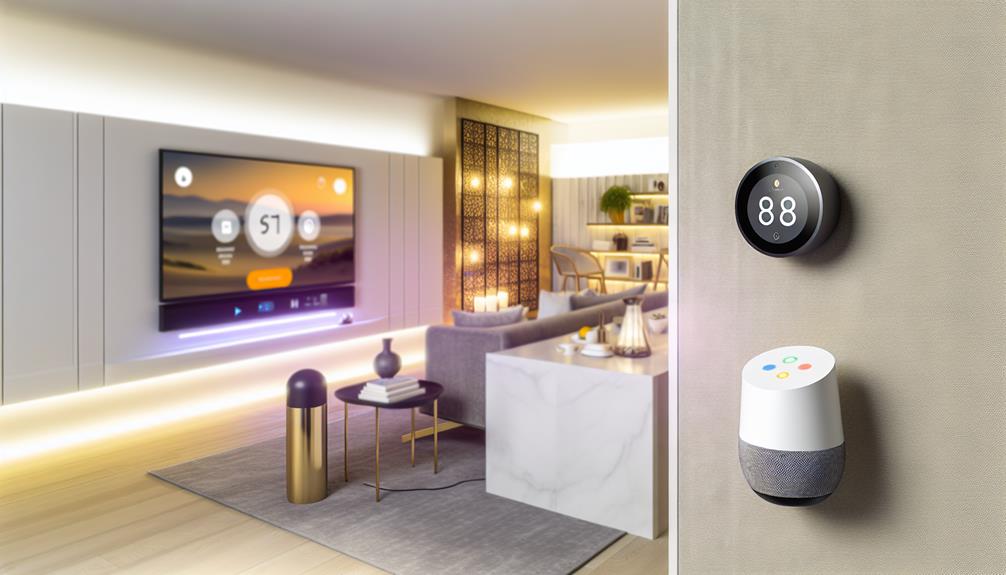Ultimate Guide to Future AI Smart Home Trends
The landscape of smart home technology is evolving rapidly, driven by advancements in artificial intelligence that promise to redefine how we interact with our living spaces. From enhanced security measures to personalized user experiences and intelligent energy management, the future holds significant innovations that could reshape everyday convenience. As we explore these emerging trends, it becomes apparent that the integration of AI into our homes not only optimizes functionality but also raises critical questions about privacy, sustainability, and the implications of a fully connected environment. How will these developments influence our daily lives?
Key takeaways
- AI-enhanced home security features like facial recognition and real-time monitoring provide improved safety and privacy for homeowners.
- Voice-activated assistants with emotional recognition and multilingual support create personalized interactions, enhancing user convenience.
- Integration of smart devices and IoT allows seamless communication and control from a central hub, improving home automation.
- Predictive maintenance solutions utilize data analytics to anticipate equipment failures, reducing downtime and maintenance costs.
- Smart energy management systems optimize consumption through renewable energy integration and real-time analytics, promoting sustainability.
AI-Enhanced Home Security
In an era where safety is paramount, AI-enhanced home security systems are revolutionizing the way homeowners protect their assets and loved ones. These systems integrate advanced technologies such as facial recognition and intrusion detection, offering unparalleled crime deterrence. By identifying familiar faces and alerting homeowners to unknown visitors, these systems foster a sense of community through enhanced neighborhood watch capabilities.
Real-time monitoring and remote surveillance provide homeowners with the peace of mind that comes from knowing their property is being observed 24/7. Automated alerts notify homeowners of any suspicious activity, ensuring a swift emergency response when necessary.
Additionally, the integration of data encryption safeguards sensitive information, maintaining user privacy while enhancing overall security. Access control features allow homeowners to manage who can enter their property, creating a personalized security environment.
The ability to monitor and control home security from a mobile device fosters a deeper sense of belonging and assurance within the home. Overall, AI-enhanced home security systems not only protect physical assets but also nurture a greater connection between individuals and their communities, establishing a safer, more cohesive living environment.
Voice-Activated Assistants
Voice-activated assistants are increasingly becoming central to the smart home ecosystem, powered by enhanced voice recognition technology that allows for more intuitive user interactions.
Their seamless integration with a range of smart devices not only enhances convenience but also raises important considerations regarding privacy and security.
As reliance on these technologies grows, it is essential to examine both their benefits and the potential vulnerabilities they introduce into everyday life.
Enhanced Voice Recognition Technology
Many consumers are increasingly drawn to the capabilities of enhanced voice recognition technology, which has revolutionized the way people interact with their smart home devices. This technology not only facilitates seamless communication but also adapts to individual user preferences, thereby fostering a sense of belonging within the smart home ecosystem.
Key advancements in voice recognition include:
- Multilingual support for diverse households
- Emotional recognition to tailor responses based on user sentiment
- Context awareness for understanding requests based on situational cues
- Noise cancellation to optimize voice commands in various environments
- Accessibility features that cater to users with disabilities
The integration of ambient intelligence and real-time processing empowers devices to discern user intent with remarkable accuracy. Voice modulation techniques enhance communication, ensuring clarity and fluidity in interactions.
In addition, user adaptation mechanisms allow the technology to evolve with user habits, creating a personalized experience.
As these capabilities continue to advance, they not only improve functionality but also deepen the emotional connections users have with their smart homes, making technology feel more intuitive and responsive to daily life.
Integration With Smart Devices
The seamless integration of voice-activated assistants with a myriad of smart devices has fundamentally transformed the landscape of home automation. This evolution is characterized by enhanced smart device compatibility, which guarantees that various devices can communicate effectively within a multi-device ecosystem. At the heart of this integration lies user interface design, which facilitates intuitive interactions for users seeking efficient control over their environments.
Seamless connectivity solutions have emerged as critical components, enabling cross-platform integration among diverse devices. Smart home hubs play a pivotal role, acting as central command centers that streamline cloud-based management and automate tasks through established automation protocols.
However, device interoperability challenges remain, particularly as new devices continually enter the market. To address these challenges, manufacturers prioritize device security standards, guaranteeing that integration does not compromise safety.
As users increasingly adopt voice-activated technology, the expectation is that their smart homes will not only be functional but also secure and user-friendly. Ultimately, the integration of voice-activated assistants is more than a trend; it signifies a shift towards a more cohesive and interconnected living experience, fostering a sense of belonging within a rapidly advancing technological landscape.
Privacy and Security Concerns
Steering through the complexities of privacy and security concerns associated with voice-activated assistants has become increasingly vital as these technologies gain widespread adoption in smart homes. Users must navigate a landscape marked by trust issues and ethical considerations, particularly regarding how their data is collected, stored, and utilized.
Key concerns include:
- User Consent: Ensuring that users fully understand and agree to data-sharing practices.
- Data Encryption: Protecting sensitive information from unauthorized access through robust encryption methods.
- Biometric Authentication: Leveraging biometric data to enhance security and streamline access.
- Surveillance Transparency: Providing clear information about when and how devices may be listening or recording.
- Privacy Regulations: Adhering to evolving privacy laws that govern user data protection.
The digital footprint created by voice-activated assistants can lead to significant implications for personal privacy. Remote access features, while convenient, can expose users to potential vulnerabilities if security protocols are not adequately implemented.
As voice technology continues to evolve, addressing these privacy and security concerns will be vital for fostering user trust and ensuring the ethical deployment of smart home technologies.
Smart Energy Management
Smart Energy Management is rapidly evolving into a cornerstone of modern households, leveraging advanced technologies to optimize energy consumption and enhance sustainability. The integration of solar panels is becoming increasingly commonplace, allowing homeowners to harness renewable energy sources effectively. This change is fortified by energy consumption analytics, which empower users to track and analyze their usage patterns, leading to more informed decisions.
Dynamic pricing models are also gaining traction, enabling consumers to adjust their energy consumption based on real-time costs. Coupled with battery storage solutions, households can optimize energy use by storing excess solar energy for later use, thereby minimizing reliance on the grid.
Grid interaction systems further facilitate this process by ensuring seamless communication between home energy systems and utility providers. Energy usage forecasting plays a crucial role in this ecosystem, enabling proactive adjustments to consumption.
Demand response technology enhances this by allowing homes to reduce energy usage during peak hours, contributing to grid stability. Additionally, smart meter advancements and energy management software provide intuitive interfaces, making it easier for households to engage in sustainable practices actively.
As we embrace these innovations, the collective effort toward a more energy-efficient future becomes increasingly attainable.
Predictive Maintenance Solutions
In an era where efficiency and reliability are paramount, predictive maintenance solutions are transforming the way homeowners manage their smart devices and appliances. Leveraging predictive analytics, these systems provide an unprecedented level of insight into device performance, allowing for proactive maintenance scheduling.
Homeowners can now receive automated alerts regarding potential issues, minimizing downtime and enhancing hardware longevity.
Key features of predictive maintenance solutions include:
- System Diagnostics: Continuous monitoring to assess device health.
- Performance Tracking: Analyzing usage patterns to optimize efficiency.
- Failure Prediction: Anticipating malfunctions before they occur.
- User Feedback Integration: Tailoring maintenance strategies based on homeowner experiences.
- Cost Reduction: Lowering repair costs through timely interventions.
Intelligent Home Automation
A significant evolution in home technology is the rise of intelligent home automation systems, which seamlessly integrate various devices to enhance convenience, security, and energy efficiency.
These systems orchestrate a harmonious living environment, allowing homeowners to control everything from automated lighting to smart entertainment systems with a single command or through intuitive smartphone applications.
Automated lighting, for instance, not only allows for energy savings by adjusting brightness based on occupancy but also enhances the ambiance of a home. Homeowners can program lighting scenes that complement activities from movie nights to dinner parties, thereby fostering a sense of togetherness and comfort.
Similarly, smart entertainment systems provide an immersive experience by synchronizing audio and visual components, allowing family members to enjoy their favorite content without the hassle of multiple remotes.
As intelligent home automation becomes more prevalent, the focus is not solely on efficiency but also on creating a connected community within the home.
These technologies bridge the gap between comfort and control, offering a lifestyle that resonates with those who seek both convenience and belonging in their living spaces.
The future of home life is certainly one of integration and personalized comfort.
Personalized User Experiences
While the integration of intelligent home automation systems lays the groundwork for an efficient living environment, the true potential of these technologies is realized through personalized user experiences.
By harnessing adaptive learning and contextual awareness, smart homes can create tailored environments that resonate with individual preferences. This level of customization transforms user behavior into dynamic interactions, ensuring that homes are not just automated, but also responsive to the emotional and practical needs of their inhabitants.
Effective personalized experiences rely on user feedback and the ability to integrate lifestyle choices seamlessly. Customized interfaces can enhance usability, making technology feel intuitive and engaging.
The following aspects highlight the significance of personalized user experiences in AI smart homes:
- Adaptive learning to anticipate needs
- Customized interfaces to enhance usability
- Contextual awareness for real-time adjustments
- Emotional responsiveness to foster connection
- Lifestyle integration for holistic living
As these features evolve, homes will no longer merely respond to commands, but will proactively enrich the lives of their residents, fostering a profound sense of belonging and comfort.
Health Monitoring Systems
Health monitoring systems have emerged as a pivotal component of AI smart homes, integrating wearable health devices with advanced technology to enhance personal well-being.
This synergy not only facilitates real-time health tracking but also enables remote patient monitoring, allowing healthcare providers to respond promptly to individual needs.
As these systems become more sophisticated, they promise to transform how we manage health within the comfort of our homes, underscoring the critical role of AI in proactive healthcare solutions.
Wearable Health Devices
Integrating seamlessly into the fabric of daily life, wearable health devices have emerged as pivotal tools in health monitoring systems. These innovations in wearable technology not only enhance health tracking and fitness monitoring, but they also empower individuals to take charge of their wellness through continuous biometric data collection.
As we embrace the capabilities of smart textiles, users can experience real-time analytics that provide insights into their physical state, thereby fostering informed health decisions.
Key features of wearable health devices include:
- Mobile health compatibility for on-the-go monitoring
- Personalized feedback tailored to individual health goals
- Seamless integration with other health systems for thorough data analysis
- Data privacy measures to protect sensitive information
- User-friendly interfaces that encourage consistent engagement
These devices exemplify the shift towards proactive health management, allowing users to monitor their well-being while fostering a sense of community among those who share similar health aspirations.
The convergence of technology and health not only enhances individual lifestyles but also cultivates a supportive environment where health is prioritized, ensuring that everyone feels connected and empowered in their health journeys.
Smart Home Integration
The evolution of smart home integration has transformed health monitoring systems into sophisticated networks that enhance well-being and safety within the domestic sphere. In today's smart home ecosystems, these systems work harmoniously, allowing for seamless device connectivity that streamlines health management.
From smart thermometers to advanced air quality monitors, the integration of these devices provides real-time insights into individual health metrics, fostering a proactive approach to wellness. Families can now create personalized health profiles, adjusting environmental factors such as temperature and humidity while ensuring that dietary preferences are catered to.
This interconnectedness not only cultivates a sense of community among users but also promotes a collective effort toward healthier living. For instance, when a smart wearable detects an irregular heartbeat, it can alert the home system to adjust lighting or notify family members, providing immediate support.
Moreover, the data collected through these integrated systems can be invaluable in identifying long-term health trends, ultimately paving the way for more informed lifestyle choices. As technology continues to advance, the potential for enriched health monitoring through smart home integration is boundless, creating a future where safety and wellness are seamlessly intertwined.
Remote Patient Monitoring
Remote patient monitoring (RPM) has emerged as a crucial advancement in the area of health management, leveraging technology to facilitate continuous observation of patients outside traditional clinical settings. This shift has been catalyzed by significant telehealth advancements, enhancing chronic disease management through timely remote diagnostics.
RPM fosters improved patient engagement by providing real-time health insights, enabling individuals to take an active role in their care.
Key features of RPM include:
- Wearable monitoring technology that tracks essential signs and health metrics.
- Virtual health consultations, allowing for convenient access to healthcare professionals.
- Data security measures to safeguard sensitive health information.
- Health data analytics that transform raw data into actionable insights for personalized treatment plans.
- Caregiver communication tools that foster collaboration between patients and their support networks.
As healthcare continues to evolve, RPM stands at the forefront, promoting a more connected and responsive healthcare system.
Integration With Iot Devices
As smart home technology continues to evolve, the seamless integration of IoT devices has become paramount in enhancing user experience and functionality. This integration facilitates a user-friendly interface that connects various systems, such as smart gardens and automated lighting, creating an ecosystem that works harmoniously.
Data interoperability is essential for ensuring that devices communicate effectively, allowing for remote control and management from a single platform. This capability not only streamlines user interaction but also enhances device compatibility across different brands and types.
For instance, energy harvesting technologies can be effectively paired with health applications, providing insights into wellness while optimizing energy use.
Furthermore, machine learning algorithms can analyze user patterns, adjusting systems to anticipate needs—from adjusting lighting as natural light changes to regulating garden watering schedules based on weather forecasts.
This level of seamless connectivity fosters a sense of belonging among users, as their homes adapt to their lifestyles, ultimately leading to a more integrated and sustainable living environment.
The future of smart homes lies in these interconnected devices, where every aspect of life is not just automated but intelligently managed.
Advanced Climate Control
The emergence of advanced climate control systems is revolutionizing how we manage home environments, primarily through smart thermostat innovations that adapt to user behavior.
These technologies not only enhance energy efficiency but also cater to personalized climate preferences, creating tailored experiences that prioritize comfort and sustainability.
As we explore these developments, it becomes evident that the integration of AI is pivotal in optimizing indoor climates while reducing energy consumption.
Smart Thermostat Innovations
Innovations in smart thermostat technology are revolutionizing climate control within our homes, offering unprecedented levels of efficiency and convenience.
These advanced devices are designed to adapt to user behavior through smart learning algorithms, ensuring ideal comfort zones while minimizing energy consumption. By utilizing energy forecasting and dynamic adjustments, smart thermostats can predict and respond to changes in both the weather and household routines.
Key features of these innovations include:
- Adaptive scheduling: Automatically adjusts settings based on user patterns.
- Remote accessibility: Control your home's climate from anywhere using a smartphone app.
- Eco-friendly settings: Promote energy conservation without sacrificing comfort.
- Seasonal optimizations: Tailor climate control strategies to seasonal changes for ideal efficiency.
- User behavior analysis: Learn and adapt to individual preferences over time.
As these technologies continue to evolve, the integration of smart thermostats into our homes not only enhances comfort but also fosters a community dedicated to sustainable living.
Embracing these innovations allows homeowners to take an active role in climate control, ensuring a personal connection to their living environment while promoting eco-conscious choices.
Energy Efficiency Solutions
Harnessing advanced climate control solutions has become an essential step toward achieving energy efficiency in modern homes. By integrating systems that utilize solar energy and advanced energy storage, homeowners can considerably reduce their energy consumption while contributing to a sustainable future.
Smart grids facilitate ideal energy distribution, allowing households to draw from renewable resources when demand is low, thereby enhancing overall efficiency.
Demand response technologies play a pivotal role in managing energy usage during peak hours, further minimizing strain on the grid and reducing costs. Home insulation remains a critical factor, ensuring that conditioned air remains within the home, thereby lowering heating and cooling demands.
Energy auditing services provide insights into energy consumption patterns, enabling targeted efficiency retrofitting that can dramatically lower a home's carbon footprint.
As communities increasingly embrace these innovations, the collective impact of enhanced climate control solutions will foster a sense of belonging within neighborhoods committed to sustainability.
Personalized Climate Preferences
Personalized climate preferences represent a significant advancement in the domain of smart home technology, offering tailored comfort that adapts to individual lifestyles and habits.
This innovative approach not only enhances the living experience but also promotes energy efficiency by utilizing customized temperature settings that respond to the unique needs of each household member.
The integration of advanced AI systems allows homeowners to enjoy a seamless interaction with their environment through user-friendly interfaces.
These systems learn from user behavior, adjusting climate controls automatically, thereby fostering a sense of belonging within the home.
Key features of personalized climate preferences include:
- Adaptive Learning: Systems that evolve with user habits and preferences.
- Remote Access: Control over climate settings via smartphone apps.
- Zoned Climate Control: Individual room settings for ideal comfort.
- Voice Activation: Hands-free adjustments for convenience.
- Energy Monitoring: Insights into energy consumption for informed decisions.
Future of Smart Appliances
The future of smart appliances is poised to revolutionize household efficiency and convenience through advanced integration of artificial intelligence and machine learning technologies. As we embrace smart kitchen innovations, appliances will become increasingly interconnected, fostering an ecosystem where energy-efficient gadgets optimize usage in real-time.
Connected laundry appliances will streamline chores, while intuitive appliance interfaces will guarantee ease of use, appealing to varying levels of tech-savviness.
Automated cooking systems, complemented by AI-powered cooking assistants, will transform meal preparation into an effortless experience. Smart refrigerator features, such as predictive grocery management, will not only track inventory but suggest recipes based on available ingredients, fostering creativity and reducing food waste.
Furthermore, self-cleaning technology will liberate individuals from mundane tasks, allowing more time for meaningful pursuits.
Crucially, appliance interoperability will enable these devices to communicate seamlessly, enhancing user experience and guaranteeing that each component of the smart home works harmoniously.
In this evolving landscape, smart appliances will not just serve functional roles but will also cultivate a sense of belonging, as families gather around automated cooking systems and share meals prepared with the assistance of intelligent technologies.
The future of smart appliances is indeed bright and promising.
Frequently Asked Questions
How Can AI Improve My Home's Resale Value?
Integrating smart home features, such as advanced security systems and energy-efficient appliances, can greatly enhance your property's appeal. These innovations not only attract tech-savvy buyers but also promise long-term savings, elevating your home's resale value.
What Are the Privacy Risks With AI Smart Homes?
Like a double-edged sword, AI smart homes enhance convenience while posing privacy risks. Data security concerns arise from potential unauthorized access, necessitating robust measures and clear user consent to safeguard personal information in interconnected environments.
Are There DIY Options for AI Home Integration?
DIY options for AI home integration include utilizing smart assistants and automation hubs. These tools empower users to customize their smart environments, fostering a sense of community and belonging through shared technological experiences and innovative home solutions.
How Do I Choose the Best AI Device for My Needs?
Selecting the ideal AI device entails maneuvering a landscape of compatibility and user interface options. Consider your existing technology, ease of use, and integration potential to guarantee a harmonious and enriching smart home experience tailored to your lifestyle.
What Is the Cost of Retrofitting My Home With AI Technology?
Retrofitting a home with AI technology incurs costs that vary based on technology upgrades and the complexity of the installation. Homeowners should carefully assess their needs to guarantee a worthwhile investment that enhances living environments effectively.



